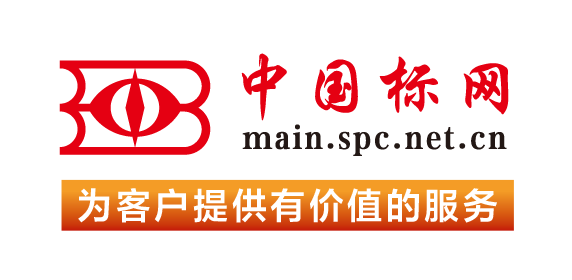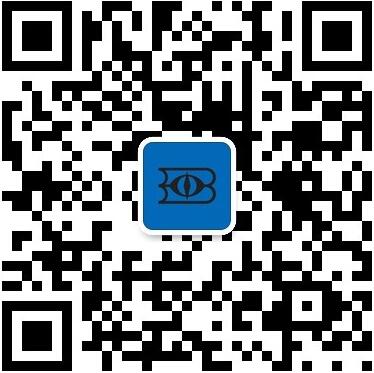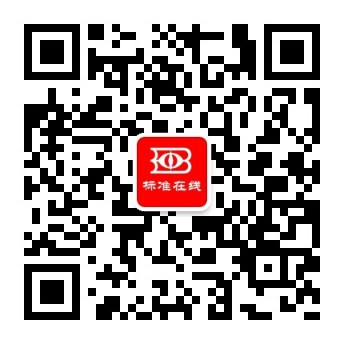5.1 This test method is capable of providing shear modulus and shear strength values for adhesives with accuracy suitable for use by design engineers in predicting the characteristics of building assemblies bonded with nonrigid adhesives. Adhesive formulators will also find the method useful during the development of new adhesive systems. In general, the thick adherend lap-shear test is a useful tool in research during studies of both short- and long-term load-deformation properties of adhesives. This thick adherend lap-shear test yields a uniformity of stress distribution approaching that obtained in thin tubular butt joints subjected to torsion, which is considered to be a condition of pure shear.5.2 The user is cautioned that pure shear strength cannot be obtained by this test method, because some tensile and compression stresses and stress concentrations are present in the joint. The estimate of shear strength by this test method will be conservative. If pure shear strength is demanded, then Test Method E229 should be used.1.1 This test method describes a method of measuring the shear modulus and rupture stress in shear of adhesives in bonded joints. The method employs lap-shear specimens with wood, metal, or composite adherends, with adhesives having shear moduli ranging up to 700 MPa (100 000 psi). This test method is suitable generally for joints in which the ratio of adherend tensile modulus to adhesive shear modulus is greater than 300 to 1. It is not suitable for adhesives that have a high shear modulus in the cured state and that also require elimination of volatile constituents during cure.1.2 The values stated in SI units are to be regarded as standard. The values given in parentheses after SI units are provided for information only and are not considered standard.1.3 This standard does not purport to address all of the safety concerns, if any, associated with its use. It is the responsibility of the user of this standard to establish appropriate safety, health, and environmental practices and determine the applicability of regulatory limitations prior to use.1.4 This international standard was developed in accordance with internationally recognized principles on standardization established in the Decision on Principles for the Development of International Standards, Guides and Recommendations issued by the World Trade Organization Technical Barriers to Trade (TBT) Committee.
定价: 646元 加购物车
5.1 Plastics are viscoelastic and it is possible that they are sensitive to changes in velocity of weights falling on their surfaces. However, the velocity of a free-falling object is a function of the square root of the drop height. A change of a factor of two in the drop height will cause a change of only 1.4 in velocity. Hagan, et al (2) found that the mean-failure energy of sheeting was constant at drop heights between 0.30 and 1.4 m. Different materials respond differently to changes in the velocity of impact.5.2 The test conditions used in Geometry GA are the same as those used in Geometry FA of Test Method D5628 (see Table 1).5.3 The test conditions of Geometry GB are equivalent to the geometry used for the Gardner Variable Height Impact Test (3).5.4 The test conditions of Geometry GC cause a punch-shear type of failure because the support-plate hole is close to the diameter of the striker.5.5 The test conditions of Geometry GD are the same as those in Test Method D3763.5.6 The test conditions of Geometry GE are the same as those in Test Method D4226, impactor head configuration H.25.5.7 Because of the nature of impact testing, the selection of a test method and striker must be somewhat arbitrary. Consider the end use environment and requirements when choosing from the available striker geometries. The selection of any one of the striker geometries is permitted.NOTE 2: Material processing can have a significant affect on the development of a plastic's physical properties. Consult relevant material standards for processing guidelines1.1 This test method covers the determination of the relative ranking of materials according to the energy required to crack or break flat, rigid plastic specimens under various specified conditions of impact of a striker impacted by a falling weight.1.2 The values stated in SI units are to be regarded as the standard. The values given in parentheses are for information only.1.3 This standard does not purport to address all of the safety concerns, if any, associated with its use. It is the responsibility of the user of this standard to establish appropriate safety, health, and environmental practices and determine the applicability of regulatory limitations prior to use.NOTE 1: There is no known ISO equivalent to this standard.1.4 This international standard was developed in accordance with internationally recognized principles on standardization established in the Decision on Principles for the Development of International Standards, Guides and Recommendations issued by the World Trade Organization Technical Barriers to Trade (TBT) Committee.
定价: 590元 加购物车
5.1 Auger electron spectroscopy and X-ray photoelectron spectroscopy are used extensively for the surface analysis of materials. This practice summarizes methods for determining the specimen area contributing to the detected signal (a) for instruments in which a focused electron beam can be scanned over a region with dimensions greater than the dimensions of the specimen area viewed by the analyzer, and (b) by employing a sample with a sharp edge.5.2 This practice is intended as a means for determining the observed specimen area for selected conditions of operation of the electron energy analyzer. The observed specimen area depends on whether or not the electrons are retarded before energy analysis, the analyzer pass energy or retarding ratio if the electrons are retarded before energy analysis, the size of selected slits or apertures, and the value of the electron energy to be measured. The observed specimen area depends on these selected conditions of operation and also can depend on the adequacy of alignment of the specimen with respect to the electron energy analyzer.5.3 Any changes in the observed specimen area as a function of measurement conditions, for example, electron energy or analyzer pass energy, may need to be known if the specimen materials in regular use have lateral inhomogeneities with dimensions comparable to the dimensions of the specimen area viewed by the analyzer.5.4 This practice can give useful information on the imaging properties of the electron energy analyzer for particular conditions of operation. This information can be helpful in comparing analyzer performance with manufacturer's specifications.5.5 Information about the shape and size of the area viewed by the analyzer can also be employed to predict the signal intensity in XPS experiments when the sample is rotated and to assess the axis of rotation of the sample manipulator.5.6 Examples of the application of the methods described in this practice have been published (1-7).55.7 There are different ways to define the spectrometer analysis area. An ISO Technical Report provides guidance on determinations of lateral resolution, analysis area, and sample area viewed by the analyzer in AES and XPS(8), and ISO 18516:2006 describes three methods for determination of lateral resolution in AES and XPS. Baer and Engelhard have used well-defined ‘dots’ of a material on a substrate to determine the area of a specimen contributing to the measured signal of a ‘small-area’ XPS measurement (9). This area could be as much as ten times the area estimated simply from the lateral resolution of the instrument. The amount of intensity in ‘fringe’ or ‘tail’ regions could also be highly dependent on lens operation and the adequacy of specimen alignment. Scheithauer described an alternative technique in which Pt apertures of varying diameters were utilized to determine the fraction of ‘long-tail’ X-ray contributions outside each aperture on the measured Pt photoelectron signal compared to that on a Pt foil (10). In test measurements on a commercial XPS instrument with a focused X-ray beam and a nominal lateral resolution of 10 μm (as determined from the distance between the positions for 20 % and 80 % of maximum signal when scans were made across an edge), it was found that aperture diameters of about 100 μm and 450 μm were required to reduce the photoelectron signals to 10 % and 1 %, respectively, of the maximum value (10). Knowledge of the effective analysis area is important when making tradeoffs between lateral resolution and detectability. In scanning Auger microscopy, the area of analysis is determined more by the radial extent of backscattered electrons than by the radius of the primary beam (11, 12, 13).1.1 This practice describes methods for determining the specimen area contributing to the detected signal in Auger electron spectrometers and some types of X-ray photoelectron spectrometers (spectrometer analysis area) when this area is defined by the electron collection lens and aperture system of the electron energy analyzer. The practice is applicable only to those X-ray photoelectron spectrometers in which the specimen area excited by the incident X-ray beam is larger than the specimen area viewed by the analyzer, in which the photoelectrons travel in a field-free region from the specimen to the analyzer entrance. Some of the methods described here require an auxiliary electron gun mounted to produce an electron beam of variable energy on the specimen (“electron-gun method”). Other experiments require a sample with a sharp edge, such as a wafer covered with a uniform clean layer (for example, gold (Au) or silver (Ag)) and cleaved to obtain a long side (“sharp-edge method”).1.2 This practice is recommended as a useful means for determining the specimen area viewed by the analyzer for different conditions of spectrometer operation, for verifying adequate specimen and beam alignment, and for characterizing the imaging properties of the electron energy analyzer.1.3 The values stated in SI units are to be regarded as standard. No other units of measurement are included in this standard.1.4 This standard does not purport to address all of the safety concerns, if any, associated with its use. It is the responsibility of the user of this standard to establish appropriate safety, health, and environmental practices and determine the applicability of regulatory limitations prior to use.1.5 This international standard was developed in accordance with internationally recognized principles on standardization established in the Decision on Principles for the Development of International Standards, Guides and Recommendations issued by the World Trade Organization Technical Barriers to Trade (TBT) Committee.
定价: 590元 加购物车
5.1 This test method provides a means for determining the specific optical density of the smoke generated by specimens of materials, products, or assemblies under the specified exposure conditions. Values determined by this test are specific to the specimen in the form and thickness tested and are not inherent fundamental properties of the material, product, or assembly tested.5.2 This test method uses a photometric scale to measure smoke obscuration, which is similar to the optical density scale for human vision. The test method does not measure physiological aspects associated with vision.5.3 At the present time no basis exists for predicting the smoke obscuration to be generated by the specimens upon exposure to heat or flame under any fire conditions other than those specified. Moreover, as with many smoke obscuration test methods, the correlation with measurements by other test methods has not been established.5.4 The current smoke density chamber test, Test Method E662, is used by specifiers of floor coverings and in the rail transportation industries. The measurement of smoke obscuration is important to the researcher and the product development scientist. This test method, which incorporates improvements over Test Method E662, also will increase the usefulness of smoke obscuration measurements to the specifier and to product manufacturers.5.4.1 The following are improvements offered by this test method over Test Method E662: the horizontal specimen orientation solves the problem of melting and flaming drips from vertically oriented specimens; the conical heat source provides a more uniform heat input; the heat input can be varied over a range of up to 50 kW/m2, rather than having a fixed value of 25 kW/m2; and, the (optional) load cell permits calculations to be made of mass optical density, which associates the smoke obscuration fire-test-response characteristic measured with the mass loss.5.5 Limitations8: 5.5.1 The following behavior during a test renders that test invalid: a specimen being displaced from the zone of controlled irradiance so as to touch the pilot burner or the pilot flame; extinction of the pilot flame (even for a short period of time) in the flaming mode; molten material overflowing the specimen holder; or, self-ignition in the nonflaming mode.5.5.2 As is usual in small-scale test methods, results obtained from this test method have proven to be affected by variations in specimen geometry, surface orientation, thickness (either overall or individual layer), mass, and composition.5.5.3 The results of the test apply only to the thickness of the specimen as tested. No simple mathematical formula exists to calculate the specific optical density of a specimen at a specimen thickness different from the thickness at which it was tested. The literature contains some information on a relationship between optical density and specimen thickness (1).95.5.4 Results obtained from this test method are affected by variations in the position of the specimen and radiometer relative to the radiant heat source, since the relative positioning affects the radiant heat flux (see also Appendix X2).5.5.5 The test results have proven sensitive to excessive accumulations of residue in the chamber, which serve as additional insulators, tending to reduce normally expected condensation of the aerosol, thereby raising the measured specific optical density (see 5.5.8.3 and 11.1.2).5.5.6 The measurements obtained have also proven sensitive to differences in conditioning (see Section 10). Many materials, products, or assemblies, such as some carpeting, wood, plastics, or textiles, require long periods to attain equilibrium (constant weight) even in a forced-draft conditioning chamber. This sensitivity reflects the inherent natural variability of the sample and is not specific to the test method.5.5.7 In this procedure, the specimens are subjected to one or more specific sets of laboratory test conditions. If different test conditions are substituted or the end-use conditions are changed, it is not necessarily possible by or from this test method to predict changes in the fire-test-response characteristics measured; therefore, the results are valid only for the fire test exposure conditions described in this procedure.5.5.8 This test method solves some limitations associated with other closed chamber test methods, such as Test Method E662 (2-6) (see 5.4.1). The test method retains some limitations related to closed chamber tests, as detailed in 5.5.8.1 – 5.5.8.5.5.5.8.1 Information relating the specific optical density obtained by this test method to the mass lost by the specimen during the test is possible only by using the (optional) load cell, to determine the mass optical density (see Annex A1).5.5.8.2 All specimens consume oxygen when combusted. The smoke generation of some specimens (especially those undergoing rapid combustion and those which are heavy and multilayered) is influenced by the oxygen concentration in the chamber. Thus, if the atmosphere inside the chamber becomes oxygen-deficient before the end of the experiment, combustion may ceases for some specimens; therefore, it is possible that those layers furthest away from the radiant source will not undergo combustion.5.5.8.3 The presence of walls causes losses through deposition of combustion particulates.5.5.8.4 Soot and other solid or liquid combustion products settle on the optical surfaces during a test, resulting in potentially higher smoke density measurements than those due to the smoke in suspension.5.5.8.5 This test method does not carry out dynamic measurements as smoke simply continues filling a closed chamber; therefore, the smoke obscuration values obtained do not represent conditions of open fires.1.1 This is a fire-test-response standard.1.2 This test method provides a means of measuring smoke obscuration resulting from subjecting essentially flat materials, products, or assemblies (including surface finishes), not exceeding 25 mm (1 in.) in thickness, in a horizontal orientation, exposed to specified levels of thermal irradiance, from a conical heater, in the presence of a pilot flame, in a single closed chamber. Optional testing modes exclude the pilot flame.NOTE 1: The equipment used for this test method is technically equivalent to that used in ISO 5659-2 and in NFPA 270.1.3 The principal fire-test-response characteristic obtained from this test method is the specific optical density of smoke from the specimens tested, which is obtained as a function of time, for a period of 10 min.1.4 An optional fire-test-response characteristic measurable with this test method is the mass optical density (see Annex A1), which is the specific optical density of smoke divided by the mass lost by the specimens during the test.1.5 The fire-test-response characteristics obtained from this test are specific to the specimen tested, in the form and thickness tested, and are not an inherent property of the material, product, or assembly.1.6 This test method does not provide information on the fire performance of the test specimens under fire conditions other than those conditions specified in this test method. For limitations of this test method, see 5.5.1.7 Use the SI system of units in referee decisions; see IEEE/ASTM SI-10. The inch-pound units given in parentheses are for information only.1.8 This test method is used to measure and describe the response of materials, products, or assemblies to heat and flame under controlled conditions, but does not by itself incorporate all factors required for fire hazard or fire risk assessment of the materials, products, or assemblies under actual fire conditions.1.9 Fire testing of products and materials is inherently hazardous, and adequate safeguards for personnel and property shall be employed in conducting these tests. This test method may involve hazardous materials, operations, and equipment. See also 6.2.1.2, Section 7, and 11.7.2.1.10 This standard does not purport to address all of the safety concerns, if any, associated with its use. It is the responsibility of the user of this standard to establish appropriate safety, health, and environmental practices and determine the applicability of regulatory limitations prior to use.1.11 This international standard was developed in accordance with internationally recognized principles on standardization established in the Decision on Principles for the Development of International Standards, Guides and Recommendations issued by the World Trade Organization Technical Barriers to Trade (TBT) Committee.
定价: 843元 加购物车
5.1 Fenestration products are often evaluated with Test Method E84 to comply with building or life safety code requirements. This practice describes specimen preparation and mounting procedures for such materials and systems.5.2 The limitations for this procedure are those associated with Test Method E84.1.1 This practice describes procedures for specimen preparation and mounting when testing fenestration profiles to assess flame spread and smoke development as surface burning characteristics using Test Method E84.1.2 This practice applies to lengths of fenestration profiles only, intended for in-fill no less than 8 in. wide.1.2.1 This practice does not apply to ancillary materials such as combustible in-fill, reinforcement, hardware, accessories, sealants, or weather-stripping1.3 This practice presents two ways of testing fenestration profiles; either as profile lengths or as sheets of materials representing the profile.1.4 Testing shall be conducted with Test Method E84.1.5 This practice gives instructions on specimen preparation and mounting, but the fire-test-response method is given in Test Method E84. See also Section 1.9 of Test Method E84 for information on operator safety.1.6 This practice does not provide pass/fail criteria that can be used as a regulatory tool.1.7 Use the values stated in inch-pound units as the standard in referee decisions. The values in the SI system of units are given in parentheses, for information only; see IEEE/ASTM SI-10 for further details.1.8 This fire standard cannot be used to provide quantitative measures.1.9 Fire testing of products and materials is inherently hazardous and adequate safeguards for personnel and property shall be employed in conducting these tests. Fire testing involves hazardous materials, operations and equipment.1.10 The text of this practice references notes and footnotes which provide explanatory material. These notes and footnotes (excluding those in tables and figures) shall not be considered requirements of the standard.1.11 This standard does not purport to address all of the safety concerns, if any, associated with its use. It is the responsibility of the user of this standard to establish appropriate safety, health, and environmental practices and determine the applicability of regulatory limitations prior to use.1.12 This international standard was developed in accordance with internationally recognized principles on standardization established in the Decision on Principles for the Development of International Standards, Guides and Recommendations issued by the World Trade Organization Technical Barriers to Trade (TBT) Committee.
定价: 515元 加购物车
5.1 Plastic composite materials for use as deck boards, stair treads, guards or handrails are evaluated in accordance with Test Method E84 to comply with building or residential code requirements. This Practice describes specimen mounting procedures for such materials.5.2 The material to be tested shall be representative of the materials used in actual field installations.NOTE 2: Test Method E84 assesses the comparative burning behavior of building materials. Thus, this practice addresses specimen preparation and mounting of materials at use thickness, with full width tunnel coverage.5.3 The limitations for this procedure are those associated with Test Method E84.1.1 This practice describes a procedure for specimen preparation and mounting when testing plastic composite materials for use as deck boards, stair treads, guards or handrails to assess flame spread index as a surface burning characteristic using Test Method E84.1.2 This practice applies to plastic composite materials, including plastic lumber and wood-plastic composites. The test specimens shall be self-supporting or held in place by added supports along the test surface, in accordance with Annex A4 of Test Method E84.1.3 This practice does not provide pass/fail criteria that can be used as a regulatory tool.1.4 This practice is applicable to (a) materials that are self-supporting and (b) materials that are not self-supporting but where the test specimen is held in place by added supports throughout the test duration without such severe sagging that it interferes with the effect of the gas flame on the test specimen.NOTE 1: Paragraph 1.4 reflects requirements contained in plastic lumber specifications.1.5 Use the values stated in inch-pound units as the standard in referee decisions. The values in the SI system of units are given in parentheses, for information only; see IEEE/ASTM SI-10 for further details.1.6 This fire standard cannot be used to provide quantitative measures.1.7 Fire testing of products and materials is inherently hazardous and adequate safeguards for personnel and property shall be employed in conducting these tests. Fire testing involves hazardous materials, operations and equipment.1.8 This practice gives instructions on specimen preparation and mounting but the fire-test-response method shall be conducted in accordance with Test Method E84. See also Section 8 for information on operator safety.1.9 The text of this practice references notes and footnotes which provide explanatory material. These notes and footnotes (excluding those in tables and figures) shall not be considered requirements of the standard.1.10 This standard does not purport to address all of the safety concerns, if any, associated with its use. It is the responsibility of the user of this standard to establish appropriate safety, health, and environmental practices and determine the applicability of regulatory limitations prior to use.1.11 This international standard was developed in accordance with internationally recognized principles on standardization established in the Decision on Principles for the Development of International Standards, Guides and Recommendations issued by the World Trade Organization Technical Barriers to Trade (TBT) Committee.
定价: 515元 加购物车
5.1 Manufacturers of SPF insulation may need to test their products for vapor-phase emissions of volatile and semi-volatile organic compounds in order to comply with voluntary standards, purchase specifications, or other requirements.5.2 Since SPF insulation is formed by chemical reaction when combining a two-component mixture during spraying, specialized equipment and procedures are needed to reproducibly create representative samples suitable for emission testing.5.3 SPF insulation product manufacturer’s specifications and instructions must be followed carefully and detailed information regarding the spraying process must be recorded (see 7.3). Other precautions regarding handling and shipping are needed to ensure that the chemical integrity of the samples is preserved to the extent possible by practical means (see 7.5).5.4 Laboratories must prepare representative test specimens from samples of SPF insulation in a consistent manner so that emission tests can be reproduced and reliable comparisons can be made between test data for different samples.1.1 This practice describes standardized procedures for the preparation, spraying, packaging, and shipping of fresh spray polyurethane foam (SPF) insulation product samples to be tested for their emissions of volatile organic compounds (VOCs) and semi-volatile organic compounds (SVOCs). These procedures are applicable to both closed-cell and open-cell SPF insulation products. Potential chemical emissions of interest include blowing agents, solvents, aldehydes, amine catalysts, diisocyanates, and flame retardants.1.2 Typically, SPF insulation samples are prepared at one location, such as a chemical manufacturing facility or a field product installation site. The newly prepared samples are preserved in a sealed bag, placed in a secondary container, and then shipped to a laboratory for testing.1.3 The spraying of SPF insulation products is only to be performed by trained individuals using professional spraying equipment under controlled conditions. The details of the spraying equipment and spraying procedures are based on industry practice and are outside of the scope of this practice.1.4 This practice also describes procedures for the laboratory preparation of test specimens from open-cell and closed-cell SPF insulation product samples. These specimens are prepared for testing in small-scale chambers following Guide D5116 and in micro-scale chambers that are described in Test Method D8142.1.5 Procedures for VOC and SVOC emission testing, gas sample collection and chemical analysis are outside of the scope of this practice. Such procedures will need to address the potential for emissions of some SVOCs, for example, amine catalysts, flame retardant and isocyanates, to adhere to the chamber walls.1.6 The values stated in SI units are to be regarded as standard. No other units of measurement are included in this standard.1.7 This standard does not purport to address all of the safety concerns, if any, associated with its use. It is the responsibility of the user of this standard to establish appropriate safety, health, and environmental practices and determine the applicability of regulatory limitations prior to use.1.8 This international standard was developed in accordance with internationally recognized principles on standardization established in the Decision on Principles for the Development of International Standards, Guides and Recommendations issued by the World Trade Organization Technical Barriers to Trade (TBT) Committee.
定价: 590元 加购物车
5.1 This test method is intended for the determination of the cylinder heat transfer performance value of a flame-resistant material or combination of materials when exposed to a continuous and constant heat source. This is used to compare materials used in flame-resistant clothing for workers when exposed to combined convective and radiant thermal hazards.NOTE 3: Air movement at the face of the specimen and around the calorimeter can affect the measured heat transferred due to forced convective heat losses. Minimizing air movement around the specimen and test apparatus will aid in the repeatability of the results.5.2 This test method maintains the specimen with and without air gaps in a static, horizontal position and does not involve movement unless the test specimen naturally changes due to the thermal exposure.5.3 This test method specifies a standardized 84 ± 2 kW/m2 (2 ± 0.05 cal/cm2·s) exposure condition. Different exposure conditions have the potential to produce different results. Use of other exposure conditions that are representative of the expected hazard are allowed but shall be reported with the results, along with a determination of the exposure energy level stability.5.4 This test method does not predict skin burn injury from the heat exposure.5.5 This test method is similar to Test Method F2700 in that it uses the same energy heat source, water-cooled shutter, data acquisition, and measures the heat transfer through protective clothing materials using a copper calorimeter. This test method differs from Test Method F2700 in the usage of an eccentric instrumented cylinder mounted horizontally that allows for the thermal shrinkage of materials when tested.1.1 This test method measures the thermal response of a material or combination of materials using a combined convective/radiant heat transmission apparatus consisting of an eccentric cylindrical test sensor. It can be used to estimate the non-steady state thermal transfer through flame-resistant materials used in clothing when subjected to a continuous, combined convective and radiant heat exposure. The average incident heat flux is 84 kW/m2 (2 cal/cm2·s), with durations up to 30 s.1.1.1 This test method is not applicable to materials that melt, drip, or cause falling debris during the test.NOTE 1: Because of the arrangement of the equipment, if materials melt, drip, or cause falling debris during the test, the test result is invalid.1.2 Heat transmission through clothing is largely determined by its thickness, including any air gaps. The air gaps can vary considerably in different areas of the human body. This method provides a means of grading materials when tested under standard test conditions and an air gap exists between the fabric and the sensor. During the exposure, fabric temperatures can exceed 400 °C. At these temperatures some fabrics are not dimensionally stable and can shrink or stretch. The cylindrical geometry used in this test method allows such motion to occur, which will affect the time to achieve the end point of the test. These effects are not demonstrated in planar geometry test methods such as Test Method F2700.1.3 This test method is used to measure and describe the response of materials, products, or assemblies to heat under controlled conditions, but does not by itself incorporate all factors required for fire hazard or fire risk assessment of the materials, products, or assemblies under actual fire conditions.1.4 The measurements obtained and observations noted only apply to the particular material(s) tested using the specified heat flux, flame distribution, and duration.1.5 The values stated in SI units are to be regarded as standard. The values given in parentheses are mathematical conversions to inch-pound units or other units commonly used for thermal testing. If appropriate, round the non-SI units for convenience.1.6 This standard does not purport to address all of the safety concerns, if any, associated with its use. Fire testing is inherently hazardous. Adequate safeguards for personnel and property shall be employed in conducting these tests. It is the responsibility of the user of this standard to establish appropriate safety, health, and environmental practices and determine the applicability of regulatory limitations prior to use.1.7 This international standard was developed in accordance with internationally recognized principles on standardization established in the Decision on Principles for the Development of International Standards, Guides and Recommendations issued by the World Trade Organization Technical Barriers to Trade (TBT) Committee.
定价: 646元 加购物车
 购物车
购物车 400-168-0010
400-168-0010










 对不起,暂未有“common”相关搜索结果!
对不起,暂未有“common”相关搜索结果!













